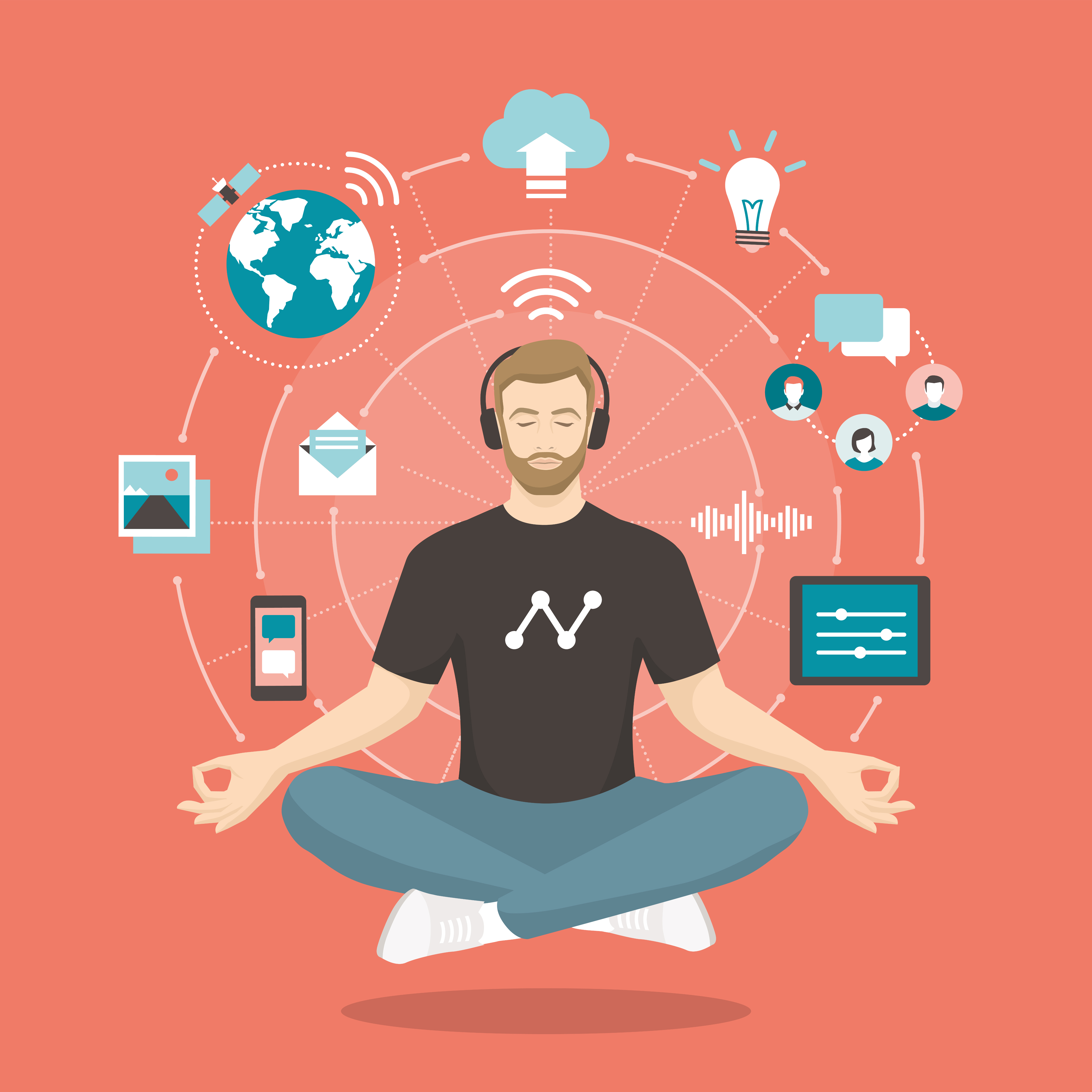Do you ever feel like you are trapped by your own devices? Last year, a news story broke when a service technician literally got stuck inside of an ATM machine. How could this possibly happen, you wonder?! Apparently, some ATMs are large enough for a human to crawl inside for servicing, which this technician did. However, a moment later, he heard this door latch shut behind him, just as he realized that he had left his phone in his truck. He was trapped.
The technician yelled as loud as he could, but alas no one could hear him outside of the soundproof vault. Three hours went by before the worker got the bright idea to slip notes to customers on their receipts saying “Help, I’m trapped in this machine. Please call my boss.” But customer after customer thought they were being pranked and drove off. Finally, a police officer drove by just when a customer received a note and took the information more seriously. He kicked down the ATM door and freed the panicked worker.
While most of us only metaphorically feel stuck inside of our devices, the idea of being trapped by technology is all too familiar…and terrifying. Former Google Design Ethicist Tristan Harris explains that phones are a bit like slot machines, offering variable rewards highly attuned to hijack our attention. The average smartphone user now picks up their phone 150 times a day, which is the equivalent of spending 2.5 hours a day or 38 days a year.
Justin Rosenstein, Creator of the Facebook “Like” button, understands all too well about the dangers of persuasive technology. One decade after he famously stayed up all night trying to code an “awesome button” to send out bits of positivity across the web, Rosenstein joined a small but mighty group of Silicon Valley heretics who feel compelled to warn people about the rise of the so-called “attention economy”: an internet that was shaped around the demands of an advertising economy.
Likewise, Nir Eyal, author of Hooked: How to Build Habit-Forming Products, explains, “The technologies we use have turned into compulsions, if not full-fledged addictions…It’s the impulse to check a message notification. It’s the pull to visit YouTube, Facebook, or Twitter for just a few minutes, only to find yourself still tapping and scrolling an hour later.” He believes that none of this is an accident; rather it’s by design.
The irony is that technology was invented to save us time, with the promise that if we just used technology, then we’d have more time to do the things we really want to be doing. And of course, then we’d be happier. But that hasn’t happened. Because with each new gadget and update, happiness continues to get pushed over the cognitive horizon and our brains never get to enjoy what is right in front of us.
If this dystopian language riles you up and makes you feel like a victim of a larger conspiracy, you are not alone. But if there is one thing I have learned in my role as co-founder GoodThink, a global positive psychology research and consulting firm, it’s that we have the agency to choose our path moving forward. While it’s true that we are facing unprecedented challenges in the Digital Era, it’s equally true that this does not have to be the end of the story.
My research has led me to believe that we are facing the beginning of a second digital divide. If the first digital divide was caused by lack of access to hardware — those with and without computers or cell phones or the internet — the second digital divide will be caused by lack of mindfulness — access to key knowledge about how to best use our devices.
Why do you think it is that Steve Jobs didn’t let his kids play with the iPhone? Why is Arianna Huffington making such a big deal about not sleeping with phones beside our bed? Why did Google recently introduce a woodworking lab to give employees time away from their screens when needed? Because these leaders know that we need to learn how to live with the complexity of life, not escape from it.
If we are to close the gap of the second digital before it widens — we need to be proactive about making that change happen. We need developers, educators, business leaders, researchers, young people, celebrities and more to help build awareness about positive strategies for creating balance in the digital era. If the skeptic inside of you wonders if this kind of change is even possible, take a close look at the newly-emerged Digital Wellness Warriors(DWW) as an example. This unique collective initially began as a small, but dedicated group of organizations petitioning Apple to let developers make meaningful changes to the iPhones to help users balance their technology addiction. However, the group soon realized their mission was far larger, and they organized to build a growing social movement for digital balance. The Digital Wellness Warriors have now grown to include more than 60 organizations across the globe, all collaborating virtually to share information and strategies for using and designing technology more thoughtfully.
Stories like this one remind us that technology can be an incredible tool, not just a trap. Yes, technology can be distracting. Yes, technology can be misused. Yes, technology can be dangerous. But it can also be an incredible resource. With our positivity driving us, we can and should be shapers of technology, not the other way around. The future of happiness begins with the choices that we make in the present.


